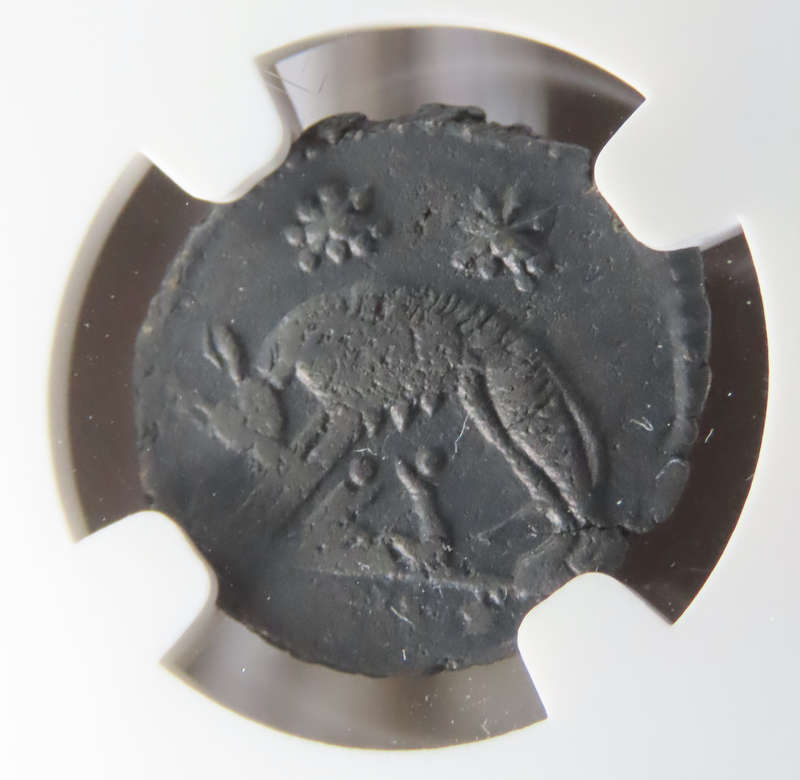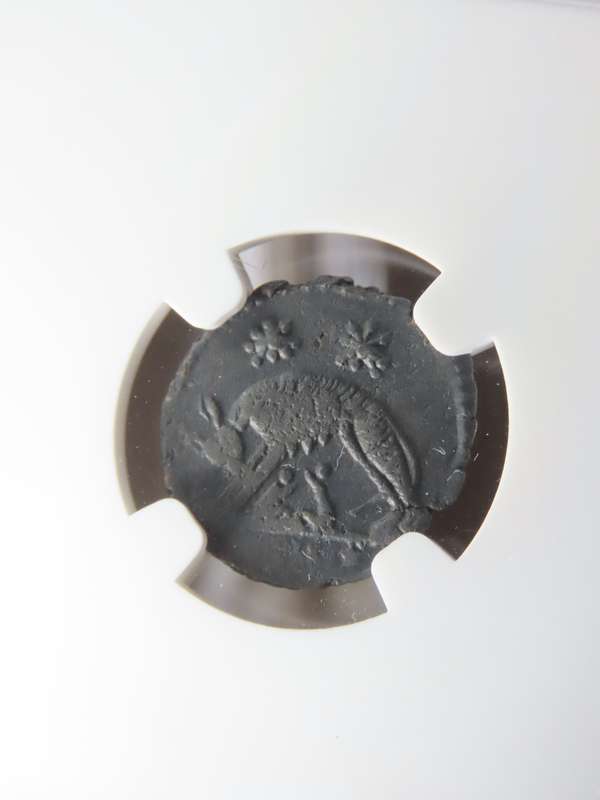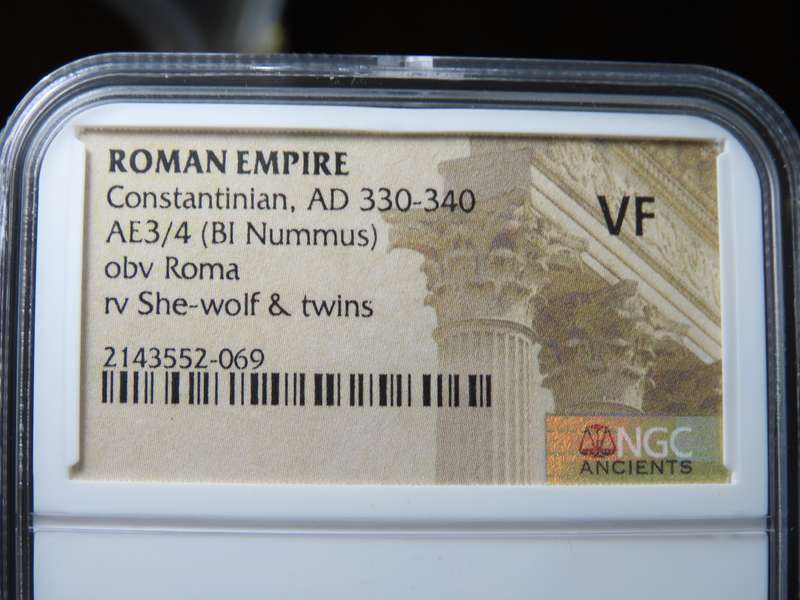










Constantinian, 330 - 340 AD, Wolf Nursing Romulus and Remus, NGC VF, Ancient Rome, Roman Coin
Check my rate
| Main centres: | 1-3 business days |
| Regional areas: | 3-4 business days |
| Remote areas: | 3-5 business days |











| Main centres: | 1-3 business days |
| Regional areas: | 3-4 business days |
| Remote areas: | 3-5 business days |
Constantinian - Founding of Rome
330 - 340 AD
NGC - VF
She Wolf(Lupa) Nursing Romulus and Remus
Roman Bronze Coin, Slabbed and Graded





A Contantinian Coin (333 to 340) AE3/4
The story of Romulus and Remus is a legendary tale of the founding of Rome. According to Roman mythology, the twin brothers were born to Rhea Silvia, a Vestal Virgin, and the god Mars, making them demi-gods. Abandoned as infants by order of King Amulius, they were placed in a basket and set adrift on the Tiber River.
The twins were miraculously saved when the basket came to rest near a fig tree. A she-wolf (lupa) discovered them and nursed them, symbolizing both survival and strength. Later, a shepherd named Faustulus found the boys and raised them as his own.
As adults, Romulus and Remus overthrew Amulius and decided to establish a city. A quarrel arose over its location, and Romulus killed Remus in the dispute. Romulus then founded Rome on April 21, 753 BCE, naming it after himself and becoming its first king.
The Constantinian era from 330 to 340 AD was marked by significant developments following the establishment of Constantinople in 330 AD as the new capital of the Roman Empire. This city, strategically located on the Bosporus, symbolized the shift of imperial focus to the eastern provinces and became a major political, cultural, and religious center.
During this time, Constantine the Great continued to consolidate Christianitys influence, promoting its integration into state structures and supporting the construction of major churches, such as the original Hagia Sophia. After Constantines death in 337, the empire was divided among his three sons: Constantine II, Constantius II, and Constans. Tensions over territorial divisions led to conflicts, most notably the death of Constantine II in 340 during his failed invasion of Constans' territory.
This decade was pivotal in solidifying the Christianization of the empire, laying the foundations for the Byzantine Empire, and highlighting the challenges of a divided imperial rule.